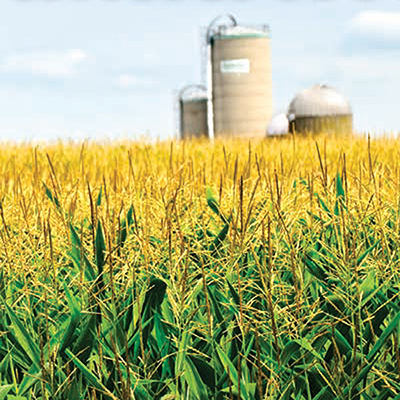What’s Beyond GMO Contamination?
We have mounting scientific evidence on the right way to create a food system to achieve sustainability and social justice goals.
Read “Organic Farmers Pay the Price for Contamination” in English or Spanish.
Felix is an organic farmer in Spain, the country that hosts 90 percent of genetically modified (GM) crops in Europe. He grows grains, alfalfa and vegetables. His organic maize was contaminated by a GM variety, and therefore he lost the organic certification for his 7.7 hectare farm. He lost €14,756 (US$20,585) as a result of the preventive measures he took to avoid contamination in addition to the direct loss of being forced to sell his harvest in the conventional markets. According to the Spanish law, he has no one to blame, so cannot claim for damages.
Tom is an organic farmer in the U.S., a country where 90 percent of soy and 93 percent of maize area is planted with GM varieties. He grows maize and is forced to take many measures to prevent contamination: planting buffer strips, delaying planting or performing extra tests, with median annual costs up to US$8,000 (€5,735). One year his maize was contaminated by a GM variety, and the buyer rejected his load, with a median loss in that season of US$4,500 (€3,226). He has no one to blame for the damage either.
The first story was reported by Greenpeace a few years ago. It just shows the tip of the iceberg when it comes to the reality of GM cultivation in Spain. The second could be the story of any of the organic farmers surveyed by Food & Water Watch and OFARM earlier this year, just released in Europe in (available in English and in Spanish).
The stories of organic and GM-free farmers in both countries are extremely similar. They’ve been forced to abandon organic cultivation of crops where there is a GM variety, incur additional labour costs and economic damages, faced financial insecurity and experienced strained relations between neighbours—without any legal protections. Clearly, what the U.S. Government, the European Commission and the industry call “coexistence” simply mean imposing GM crops.
Nevertheless, there is one important difference: the EU only allows the cultivation of one GM maize variety so far. But the reality of European small-scale agriculture shows that the situations in those countries that allow GM cultivation (Spain, Portugal or the Czech Republic) are already too serious to be ignored. And this is something the European Commission should keep in mind when deciding whether or not to approve a new GM crop, a maize engineered by Pioneer to kill insects and resist herbicides.
We have mounting scientific evidence on the right way to create a food system to achieve sustainability and social justice goals. And the European Commission will have to decide whom do they want to stand for. Will they stand for Felix and the organic farmers, a growing sector that creates employment and puts new energies in rural areas? Or will they stand for Pioneer, Monsanto and Syngenta, who are lobbying hard to get their GM crops approved in Europe? The answer will be coming soon.
Tell the European Food Safety Authority: If it’s dangerous you want less NOT more!



